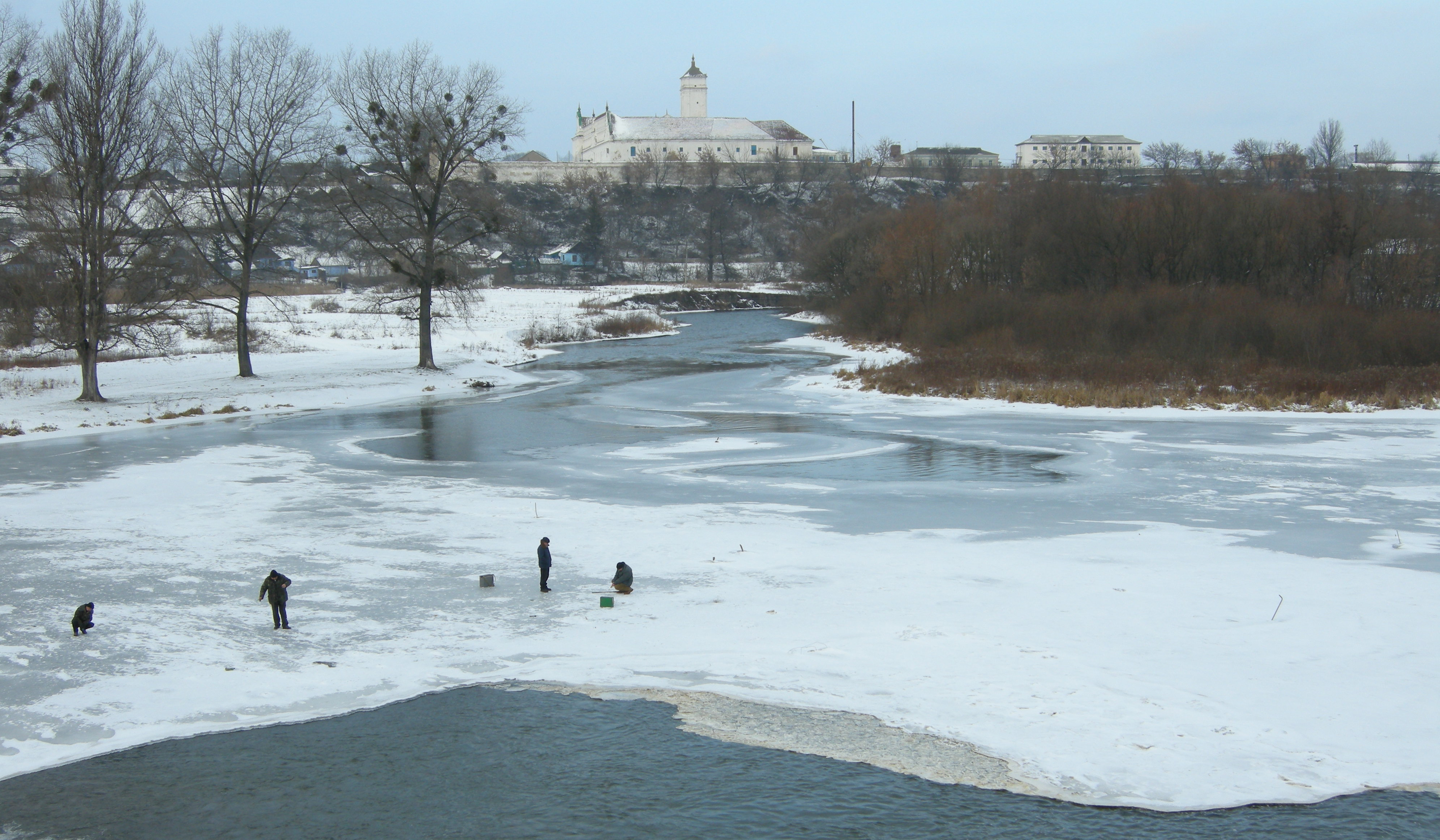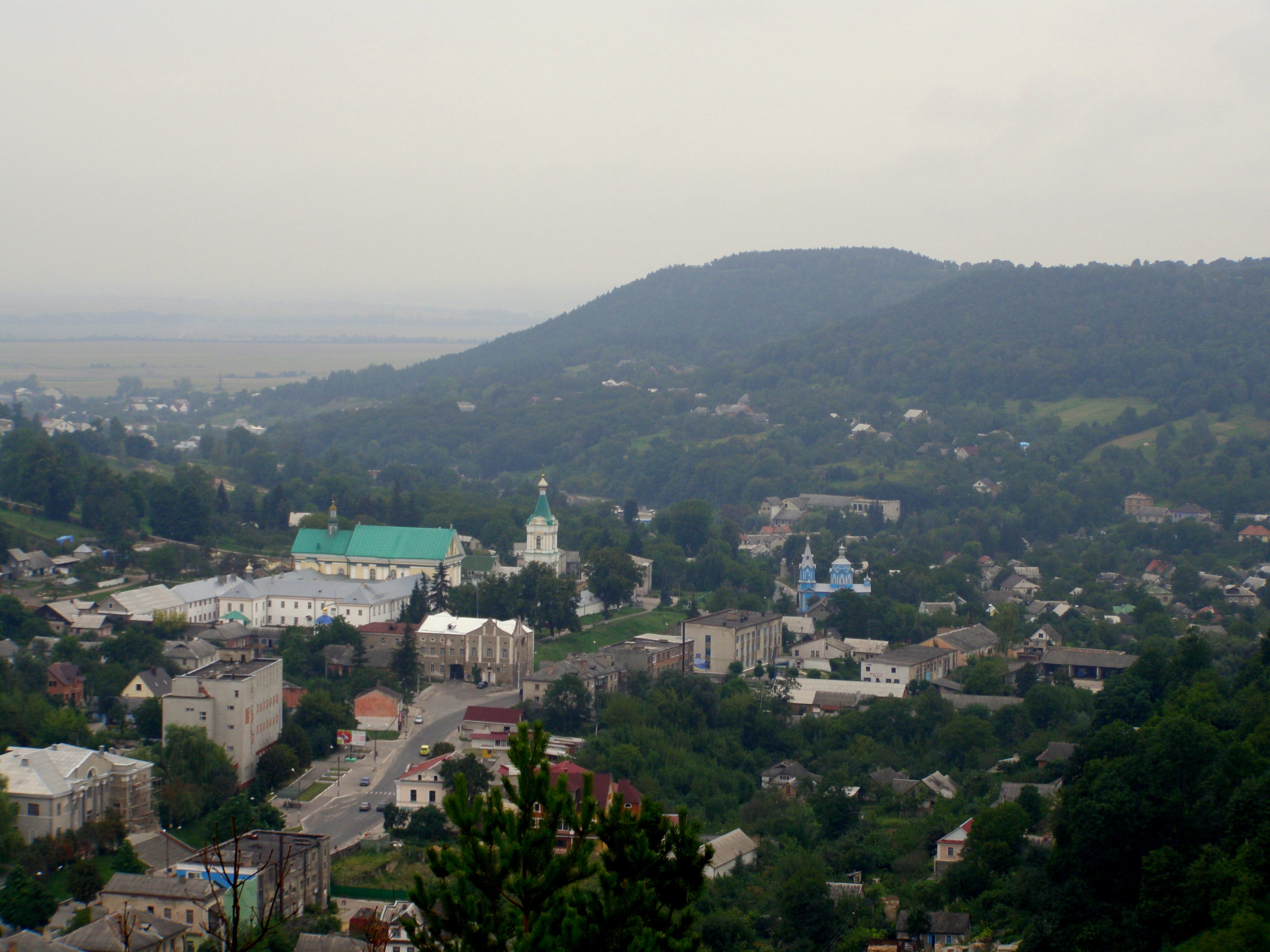|
Zbruch
The Zbruch ( uk, Збруч, pl, Zbrucz) is a river in Western Ukraine, a left tributary of the Dniester.Збруч It flows within the starting from the Avratinian Upland. Zbruch is the namesake of the , a sculpture of a (9th century) in the form of a column with a head with f ... [...More Info...] [...Related Items...] OR: [Wikipedia] [Google] [Baidu] |
Sviatovit
Svetovit, Sventovit, Svantovit is the god of abundance and war, and the chief god of the Slavic tribe of the Rani, and later of all the Polabian Slavs. His organized cult was located on the island of Rügen, at Cape Arkona, where his main temple was also located. According to the descriptions of medieval chroniclers, the statue representing this god had four heads, a horn and a sword, and to the deity himself were dedicated a white horse, a saddle, a bit, a flag, and eagles. Once a year, after the harvest, a large festival was held in his honor. With the help of a horn and a horse belonging to the god, the priests carried out divinations, and at night the god himself rode a horse to fight his enemies. His name can be translated as "Strong Lord" or "Holy Lord". In the past it was often mistakenly believed that the cult of Svetovit originated from St. Vitus. Among scholars of Slavic mythology, Svetovit is often regarded as a Polabian hypostasis of Pan-Slavic god Perun. His cult col ... [...More Info...] [...Related Items...] OR: [Wikipedia] [Google] [Baidu] |
Zbruch Idol
The Zbruch Idol, Sviatovid (''Worldseer'', pl, Światowid ze Zbrucza, uk, Збручанський ідол) is a 9th-century sculpture, more precisely an example of a bałwan, and one of the few monuments of pre-Christian Slavic mythology, Slavic beliefs (according to another interpretation, it was created by the Kipchaks/Cumans). The pillar was commonly incorrectly associated with the Slavic deity Sviatovid, although current opinions on the exact meaning of all the bas-reliefs and their symbols differ. It is thought that the three tiers of bas-relief represent the three levels of the world, from the bottom underworld, to the middle mortal world and the uppermost, largest, world of heavenly gods. It is suggested that the sculpture was disposed of or was buried in a pit some time after the baptism of Kyivan Rus, and Christianization of Poland, acceptance of Christianity in Poland in 966, like various buried idols in Kyiv and Novgorod. In the 19th century, when the Zbruch River (a ... [...More Info...] [...Related Items...] OR: [Wikipedia] [Google] [Baidu] |
Ternopil Oblast
Ternopil Oblast ( uk, Тернопі́льська о́бласть, translit=Ternopilska oblast; also referred to as Ternopilshchyna, uk, Терно́пільщина, label=none, or Ternopillia, uk, Тернопілля, label=none) is an oblast (province) of Ukraine. Its administrative center is Ternopil, through which flows the Seret, a tributary of the Dniester. Population: One of the natural wonders of the region are its cave complexes.Tell about Ukraine. Ternopil Oblast 24 Kanal (youtube). Although Ternopil Oblast is among the smallest regions in Ukraine, over 100 caves have been discovered there. Scientists believe these are only 20% of all possible caves in the region. The biggest cave is |
Archaeological Museum Of Kraków
The Archaeological Museum of Kraków ( pl, Muzeum Archeologiczne w Krakowie) is a historic museum in Kraków, Lesser Poland Voivodeship, Poland. It was established in 1850. History The Archaeological Museum in Kraków is the oldest archaeological museum in Poland. It was founded as the Muzeum of Antiquity, by a group of intellectuals and academics who belonged to the Kraków Scientific Society (''Towarzystwo Naukowe Krakowskie'', TNK) during the Partitions of Poland. The foreign rule in the Austrian Partition prohibited the existence of Polish patriotic organizations except for the learning societies like the TNK; which in turn, set up a museum as centre of Polish socio-cultural activities. The TNK society which sponsored the museum foundation, existed in Kraków since 1816. It has formed its own Division of Art and Archeology in 1848. The founding act was signed on 18 February 1850 by the Committee which included such notable personalities as Director of the Jagiellonian Library, ... [...More Info...] [...Related Items...] OR: [Wikipedia] [Google] [Baidu] |
Khmelnytskyi Oblast
Khmelnytskyi Oblast ( uk, Хмельни́цька о́бласть, translit=Khmelnytska oblast; also referred to as Khmelnychchyna — uk, Хмельни́ччина) is an oblast (province) of western Ukraine covering portions of the historical regions of western Podolia and southern Volhynia. The administrative center of the oblast is the city of Khmelnytskyi. The current estimated population is around . Created in 1937 out of border okrugs of Vinnytsia Oblast, in 1941–44 it was under Nazi Germany occupation and part of the Reichskommissariat Ukraine (Wolhynien und Podolien general district). Following the Kamenets-Podolsky pocket in spring of 1944 as part of the Proskurov-Chernovtsy operation, Soviet troops removed the German occupation in the region. Until 4 February 1954 it was called Kamianets-Podilsky Oblast () and was centered in Kamianets-Podilsky until 1941. The region rebranding took place after the official renaming of the region's administrative center to K ... [...More Info...] [...Related Items...] OR: [Wikipedia] [Google] [Baidu] |
Dniester
The Dniester, ; rus, Дне́стр, links=1, Dnéstr, ˈdⁿʲestr; ro, Nistru; grc, Τύρᾱς, Tyrās, ; la, Tyrās, la, Danaster, label=none, ) ( ,) is a transboundary river in Eastern Europe. It runs first through Ukraine and then through Moldova (from which it more or less separates the breakaway territory of Transnistria), finally discharging into the Black Sea on Ukrainian territory again. Names The name ''Dniester'' derives from Sarmatian ''dānu nazdya'' "the close river." (The Dnieper, also of Sarmatian origin, derives from the opposite meaning, "the river on the far side".) Alternatively, according to Vasily Abaev ''Dniester'' would be a blend of Scythian ''dānu'' "river" and Thracian ''Ister'', the previous name of the river, literally Dān-Ister (River Ister). The Ancient Greek name of Dniester, ''Tyras'' (Τύρας), is from Scythian ''tūra'', meaning "rapid." The names of the Don and Danube are also from the same Indo-Iranian word ''*dānu'' "ri ... [...More Info...] [...Related Items...] OR: [Wikipedia] [Google] [Baidu] |
Podolian Upland
The Podolian Upland (Podolian Plateau) or Podillia Upland ( uk, подільська височина, ''podilska vysochyna'') is a Upland (geology), highland area in southwestern Ukraine, on the left (northeast) bank of the Dniester, Dniester River, with small portions in its western extent stretching into eastern Poland. The region lies roughly between the Southern Bug and Dniester Rivers, with the Western Bug also originating in the northwest of the highlands. The average altitude of the Podolian Upland is over with the maximum being a hill known as Kamula Mountain, at . The surface is characterized by a combination of wide flat interfluves and deep canyon-like valleys (so called Dale (landform), dales) dissected into separate natural sub-regions: *Wooded heightened hills ** Roztocze, Roztochia ** Holohory ** Voronyaky ** Kremenets Hills (Mountains) ** Tovtry *Flat treeless plateaus ** Ternopil Plateau ** Upper Bug Plateau ** North-Podolian Plateau The Podolian Upland and t ... [...More Info...] [...Related Items...] OR: [Wikipedia] [Google] [Baidu] |
Poland
Poland, officially the Republic of Poland, is a country in Central Europe. It is divided into 16 administrative provinces called voivodeships, covering an area of . Poland has a population of over 38 million and is the fifth-most populous member state of the European Union. Warsaw is the nation's capital and largest metropolis. Other major cities include Kraków, Wrocław, Łódź, Poznań, Gdańsk, and Szczecin. Poland has a temperate transitional climate and its territory traverses the Central European Plain, extending from Baltic Sea in the north to Sudeten and Carpathian Mountains in the south. The longest Polish river is the Vistula, and Poland's highest point is Mount Rysy, situated in the Tatra mountain range of the Carpathians. The country is bordered by Lithuania and Russia to the northeast, Belarus and Ukraine to the east, Slovakia and the Czech Republic to the south, and Germany to the west. It also shares maritime boundaries with Denmark and Sweden. ... [...More Info...] [...Related Items...] OR: [Wikipedia] [Google] [Baidu] |
Imperial Russia
The Russian Empire was an empire and the final period of the List of Russian monarchs, Russian monarchy from 1721 to 1917, ruling across large parts of Eurasia. It succeeded the Tsardom of Russia following the Treaty of Nystad, which ended the Great Northern War. The rise of the Russian Empire coincided with the decline of neighbouring rival powers: the Swedish Empire, the Polish–Lithuanian Commonwealth, Qajar Iran, the Ottoman Empire, and Qing dynasty, Qing China. It also held colonies in North America between 1799 and 1867. Covering an area of approximately , it remains the list of largest empires, third-largest empire in history, surpassed only by the British Empire and the Mongol Empire; it ruled over a population of 125.6 million people per the Russian Empire Census, 1897 Russian census, which was the only census carried out during the entire imperial period. Owing to its geographic extent across three continents at its peak, it featured great ethnic, linguistic, re ... [...More Info...] [...Related Items...] OR: [Wikipedia] [Google] [Baidu] |
Kingdom Of Galicia And Lodomeria
The Kingdom of Galicia and Lodomeria,, ; pl, Królestwo Galicji i Lodomerii, ; uk, Королівство Галичини та Володимирії, Korolivstvo Halychyny ta Volodymyrii; la, Rēgnum Galiciae et Lodomeriae also known as Austrian Galicia or colloquially Austrian Poland, was a constituent possession of the Habsburg monarchy in the historical region of Galicia in Eastern Europe. The crownland was established in 1772. The lands were annexed from the Polish-Lithuanian Commonwealth as part of the First Partition of Poland. In 1804 it became a crownland of the newly proclaimed Austrian Empire. From 1867 it was a crownland within the Cisleithanian or Austrian half of the dual monarchy of Austria-Hungary. It maintained a degree of provincial autonomy. Its status remained unchanged until the dissolution of the monarchy in 1918. The domain was initially carved in 1772 from the south-western part of the Polish–Lithuanian Commonwealth. During the following pe ... [...More Info...] [...Related Items...] OR: [Wikipedia] [Google] [Baidu] |
Austrian Empire
The Austrian Empire (german: link=no, Kaiserthum Oesterreich, modern spelling , ) was a Central-Eastern European multinational great power from 1804 to 1867, created by proclamation out of the realms of the Habsburgs. During its existence, it was the third most populous monarchy in Europe after the Russian Empire and the United Kingdom. Along with Prussia, it was one of the two major powers of the German Confederation. Geographically, it was the third-largest empire in Europe after the Russian Empire and the First French Empire (). The empire was proclaimed by Francis II, Holy Roman Emperor, Francis II in 1804 in response to Napoleon's declaration of the First French Empire, unifying all Habsburg monarchy, Habsburg possessions under one central government. It remained part of the Holy Roman Empire until the latter's dissolution in 1806. It continued fighting against Napoleon throughout the Napoleonic Wars, except for a period between 1809 and 1813, when Austria was first all ... [...More Info...] [...Related Items...] OR: [Wikipedia] [Google] [Baidu] |
Trade Route From The Varangians To The Greeks
The trade route from the Varangians to the Greeks was a medieval trade route that connected Scandinavia, Kievan Rus' and the Eastern Roman Empire. The route allowed merchants along its length to establish a direct prosperous trade with the Empire, and prompted some of them to settle in the territories of present-day Belarus, Russia and Ukraine. The majority of the route comprised a long-distance waterway, including the Baltic Sea, several rivers flowing into the Baltic Sea, and rivers of the Dnieper river system, with portages on the drainage divides. An alternative route was along the Dniestr river with stops on the Western shore of Black Sea. These more specific sub-routes are sometimes referred to as the Dnieper trade route and Dniestr trade route, respectively. The route began in Scandinavian trading centers such as Birka, Hedeby, and Gotland, the eastern route crossed the Baltic Sea, entered the Gulf of Finland, and followed the Neva River into Lake Ladoga. Then it follo ... [...More Info...] [...Related Items...] OR: [Wikipedia] [Google] [Baidu] |





